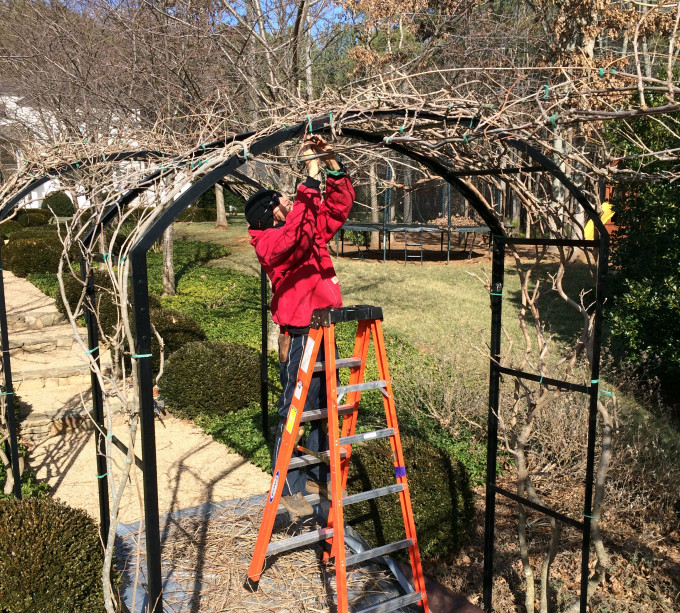Winter Pruning
Winter is the best time of year to prune and train small trees. Once the tree has shed its leaves, structural problems are more easily identified and can be corrected with careful pruning, preventing problems from developing in the future.
Pruning, when done correctly, is part art and part science. It requires knowledge of tree dynamics, an understanding of individual species and their unique habits, and a long term vision.
Not every tree needs to be pruned every year. Often pruning methods such as topping, are done unnecessarily and actually hasten the demise of the tree. For certain species, such as Cornus florida (the white flowering dogwood), which flowers on the previous year’s growth, heavy winter pruning will reduce or alleviate the following season’s flowers. You may want to determine your goals before you dig out your saw.
When evaluating each tree, look for the following:
- Double leaders – trees such as Quercus (oaks) rely on a single main stem and even branching for optimum health. If two leaders develop and begin competing at a young age, the long term stability of the tree’s structure may be compromised.
- Crossing branches – branches which rub against each other or occupy the same space in the tree may become a structural and aesthetic problem as they grow larger.
- Dead, diseased, or broken branches – broken and diseased branches should be removed at their collar.
When in doubt, consult a pruning expert at J.W. Townsend Landscapes.
PHOTO: Winter pruning of Wisteria in Albemarle County.
